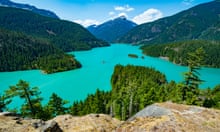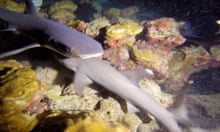More than half the myriad tree species in the Amazon could be heading for extinction, according to a study that makes the first comprehensive estimate of threatened species in the world’s largest rainforest. Among the species expected to suffer significant falls in numbers are the Brazil nut, and wild cacao and açai trees, all important food sources.
The world’s most diverse forest has endured decades of deforestation, with loggers, farmers and miners responsible for the removal of 12% of its area. If that continues in the decades ahead, 57% of the 15,000 tree species will be in danger, according to the researchers.
However, if existing protected areas and indigenous territories across the vast area suffer no further damage, the number of species at risk would be restricted to a third of the total.
“Forests in the Amazon have been declining since the 1950s, but [until now] there was a poor understanding of how this has affected populations of individual species,” said Prof Carlos Peres, at the University of East Anglia, one of the 158 scientists from 21 countries who worked together on the study.
“Protected areas and indigenous territories now cover over half of the Amazon basin. But forests and reserves still face a barrage of threats, from dam construction and mining, to wildfires and droughts intensified by global warming.”

Brazil, which holds 60% of the Amazon forest, has sharply cut its rates of deforestation in the last decade. But elsewhere the felling continues unchecked, and it is increasing in Bolivia and Peru. Overall, an area the size of about 4,500 football pitches is still being lost every day.
If Brazil can restrict its deforestation to current levels and other countries improve to match that, protected areas could remain largely untouched. But Rafael Salomão, of Emílio Goeldi Museum in Belem, Brazil, and a member of the research team, said: “The vast majority of protected areas in the Amazon have no management plan or budget and few resident qualified personnel.”
Furthermore, demand for beef, soy and palm oil, which drives much deforestation, is likely to rise rapidly as the global population grows, increasing the pressure to clear more forest. “It’s a battle we’re going to see play out in our lifetimes,” said William Laurance, of James Cook University in Australia, who was also part of the study.
The study, published in the journal Science Advances, compared almost 1,500 forest surveys from across the Amazon with maps of current and projected deforestation. From this, the scientists could estimate how the overall populations of the different tree species have changed and how they may change in future.
They used these population changes to work out how threatened the species were according to the criteria used by the IUCN (International Union for Conservation of Nature) to draw up its “red lists” of endangered species. To be placed on the red list of species requires detailed analysis of past and projected population changes.

In the last 10 years, scientists have had the resources to place 1,275 plant species from tropical South America on red lists. The much broader approach taken in the new research provides strong evidence that the number of red-listed Amazonian tree and plants should be 10 times higher.
If the Amazon nations are unable to check deforestation between now and 2050, the scientists estimate that 63% of wild Brazil nut trees will be lost. But if protected areas are left intact, the loss falls to 32% – a major decline, nevertheless, which would still class the species as vulnerable to extinction. Similarly, continued deforestation would lead to the loss of 72% of wild açai palm and 50% of wild cacao trees.










Comments (…)
Sign in or create your Guardian account to join the discussion